Digital Poster
Diffusion Models Across the MRI Spectrum
ISMRM & ISMRT Annual Meeting & Exhibition • 10-15 May 2025 • Honolulu, Hawai'i

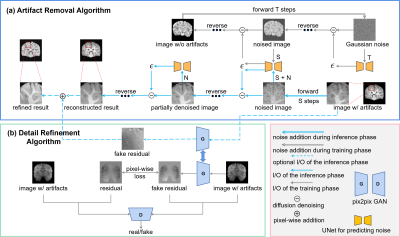 |
Computer Number: 1
3971. Unconditional
Diffusion Model for 3D MRI Artifact Removal and Detail
Refinement
H. Deng, Z. Zhu, L. Zhang, M. Yang, Z. Lan, M. Yang, S.
Wang, J. Liu, H. Zhang
School of Biomedical Engineering , ShanghaiTech University, Shanghai, 201210, China, Shanghai, China
Impact: We propose a motion artifact reduction method
based on unconditional DPM with a supervised fine-tuning
module, DR. This approach demonstrates significant accuracy
and robustness. Our method is highly valuable to
neuroscience and clinical studies on existing and future
large-scale datasets.
|
|
|
Computer Number:
3972. WITHDRAWN |
||
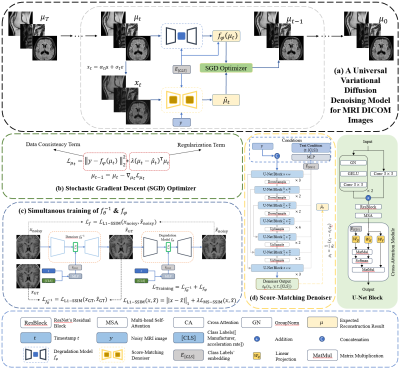 |
Computer Number: 2
3973. Universal
Denoising for MRI DICOM Images Across Diverse Clinical
Conditions Through Variational Diffusion Model
Y. Shao, Y. Qiu, D. Li, L. Zhang, S. Lin, S. Chen, P. Chen,
X. Jin, L. Du, Y. Gu, X. Huang, A. Liu, J. Zhong, S. Liao,
K. Sun, D. Shen
ShanghaiTech University, Shanghai, China
Impact:
This study provides a novel solution to the over-smoothness issue for diffusion models when dealing with diverse and complex real-world data. Our model shows promising denoising performance on real-world clinical images scanned with 2x or 3x acceleration factor. |
|
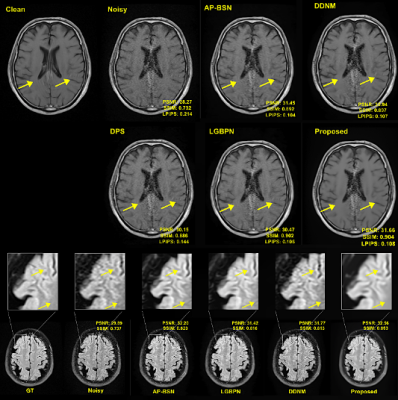 |
Computer Number: 3
3974. Unsupervised
Zero-Shot MR Image Denoising via Diffusion Null-space Model
K. Zhang, A. Shankaranarayanan, Z. Zhou
University of Washington, Seattle, United States
Impact: The proposed zero-shot method enables immediate
deployment across different MRI protocols without
retraining, enabling reduced scan times or lower field
strengths while maintaining diagnostic quality. The approach
opens possibilities for applying diffusion models to MRI
challenges without extensive data collection.
|
|
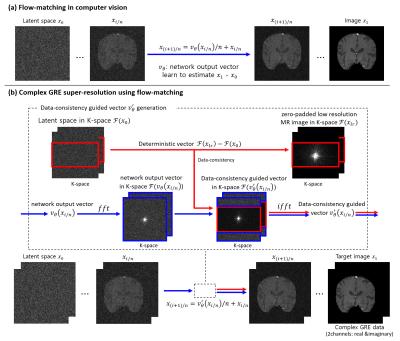 |
Computer Number: 4
3975. High-speed
high-quality super-resolution diffusion model via flow-matching
J. Park, J. Yoon, M. Kim, J. Choi, J. Lee
Seoul National University, Seoul, Korea, Republic of
Impact: The proposed data-consistency guided
super-resolution network using diffusion model via flow
matching demonstrates high-quality images, outperforming
existing methods while shortening the processing times more
than 10 times (43.9 sec vs. 8 min 4 sec).
|
|
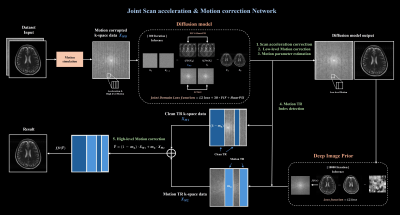 |
Computer Number: 5
3976. Motion
correction and scan acceleration using diffusion informed prior
G. Son, D. Kim
Yonsei university, Seoul, Korea, Republic of
Impact: This framework provides robust motion correction
for MRI, preserving details and enabling broader
applications for complex-domain MRI data.
|
|
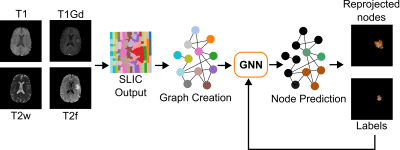 |
Computer Number: 6
3977. Graph-Aided
Diffusion Models for Precision Segmentation of Challenging Tumor
Areas in MRI
L. Rivera Monroy, L. Pfaff, T. Wang, N. Kleuser, A. Maier
Friedrich-Alexander-Universität Erlangen-Nürnberg (FAU), Erlangen, Germany
Impact: This study builds on prior work by combining
diffusion models with graph neural networks to enhance brain
tumor segmentation. By utilizing focused graph
representations, the proposed method improves precision
particularly within the tumor core and smaller subregions.
|
|
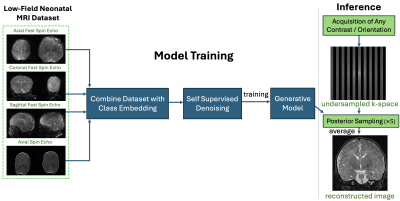 |
Computer Number: 7
3978. Diffusion
Probabilistic Generative Models for Accelerated in-NICU,
Permanent Magnet Neonatal MRI Reconstruction
Y. Arefeen, B. Levac, J. Tamir
The University of Texas at Austin, Austin, United States
Impact: The improvement in acquisition speed of T1 and
T2 weighted
lower field neonatal MRI protocols using
diffusion-probabilistic-generative models, trained with
methods designed to handle the noisy, limited data, improves
accessibility of MRI to patients in the
neonatal-intensive-care-unit.
|
|
 |
Computer Number: 8
3979. Blind
harmonization reinvented via 3D diffusion model
H. Jeong, H. Lee, S. Y. Chun, J. Lee
Seoul National University, Seoul, Korea, Republic of
Impact: BlindHarmonyDiff is a novel blind harmonization
technique that overcomes the limitations of previous methods
by generating high-quality 3D harmonized images, effectively
handling images with large domain gap. Its refinement module
mitigates hallucinations from diffusion models, improving
reliability and clinical applicability.
|
|
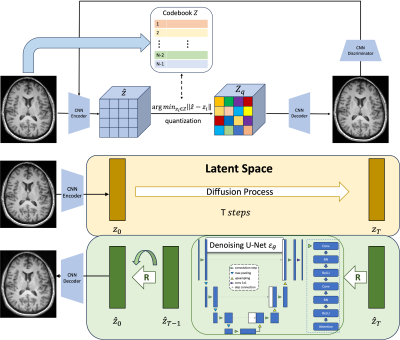 |
Computer Number: 9
3980. Correction
of Motion-Affected MRI Images via Motion-Adaptive Diffusion
Model
Q. Sun, Y. Chai, M. Khoo, H. Kim
Neuroimaging with Deep Learning Lab (NIDLL), Stevens Neuroimaging and Informatics Institute, University of Southern California, Los Angeles , United States
Impact: This project significantly improves MRI
diagnostic accuracy by effectively correcting motion
artifacts. It provides a more efficient and reliable
solution for both clinical and research applications by
reducing the need for repeat scans and enhancing image
quality.
|
|
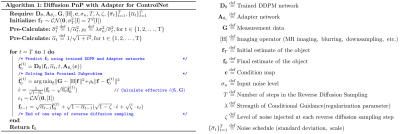 |
Computer Number: 10
3981. Efficient
and Effective Control Adapters for Diffusion Plug-and-Play
models: A DWI Application
B. Xin, R. Miron, M. Mostapha, N. Janardhanan, O. Darwish,
T. Huelnhagen, T. Wuerfl, D. Grodzki, R. Schneider, M. Nadar
Rutgers, The State University of New Jersey, NJ, USA, New Jersey, United States
Impact: The proposed PnP method offers a flexible
solution for using a pre-trained diffusion prior in a
flexible framework for image reconstruction. Using the
adapter can improve certain scenarios, only if needed,
without the need for re-training the prior.
|
|
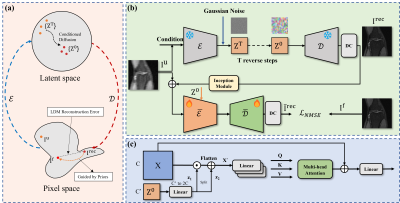 |
Computer Number: 11
3982. VMamba
UNet with Latent Diffusion Prior Guidance for MRI Reconstruction
L. Zhang, B. Qiu
University of Science and Technology of China, Hefei, China
Impact: This work investigates the role of generative
priors of latent diffusion models on MRI reconstruction
tasks and facilitates the frontier studies of
deep-learning-based rapid reconstruction methods.
|
|
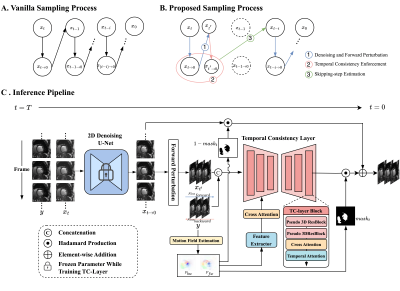 |
Computer Number: 12
3983. Cine
Cardiac MR Super-resolution using a Fast Diffusion Model with
Motion Guided Temporal Consistency Enforcement
H. Liao, C. Liu, Q. Miao, P. Hu, H. Qi
ShanghaiTech University, Shanghai, China
Impact: The proposed method yielding good-quality cine
cardiac MR image series from low-resolution images enables
accelerated cine cardiac MR acquisition, and could be
potentially applied to achieve high spatial-temporal
real-time cardiac MRI.
|
|
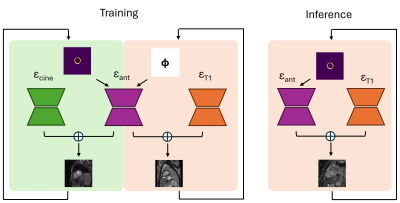 |
Computer Number: 13
3984. No
Annotate Again (NAA): Realistic Image and Annotation Synthesis
for Multi-Contrast MRI through Diffusion without Paired Data
X. Chen, C. Li, E. Chen, Y. Liu, L. Zhao, T. Chen, S. Sun
UII America Inc., Boston, United States
Impact: NAA enables scalable, annotation-free neural
network developments for medical image analysis. This
approach reduces dependency on annotated datasets and can
benefit a wide range of applications.
|
|
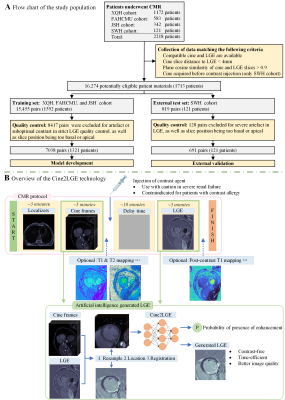 |
Computer Number: 14
3985. Contrast-enhanced
Cardiac MRI Generation Using Contrast-free Cardiac Cine MRI
P. Xie, Z. Li, W. Chen, Y. Ma, J. Xiao
Chongqing Emergency Medical Centre, Chongqing University Central Hospital, School of Medicine, Chongqing University, Chongqing, China
Impact: We demonstrate the potential of diffusion models
in generating LGE using contrast-free cine images. The
proposed method is expected to provide a valuable
alternative for patients who cannot obtain LGE images due to
contraindications.
|
|
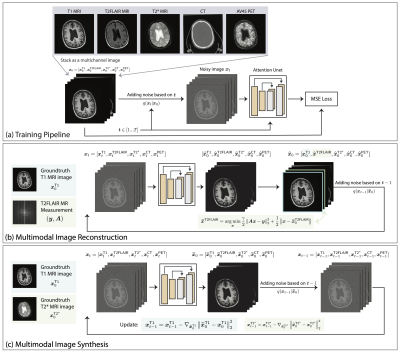 |
Computer Number: 15
3986. A
Unified Diffusion Model for Multimodal Image Reconstruction and
Synthesis
W. Gan, X. Wang, T. Wang, C. Ying, Y. Hu, Y. Chen, H. An, U.
Kamilov
Washington University in St. Louis, St. Louis, United States
Impact: This work simplifies multimodality medical
imaging by using one model for reconstruction and synthesis,
reducing training and deployment complexity. It also offers
the potential to enhance clinical imaging efficiency and
provides a new tool for leveraging multimodality
information.
|
The International Society for Magnetic Resonance in Medicine is accredited by the Accreditation Council for Continuing Medical Education to provide continuing medical education for physicians.